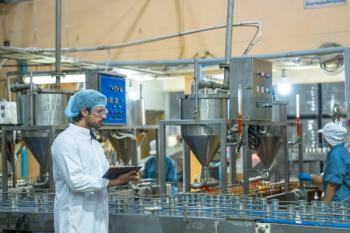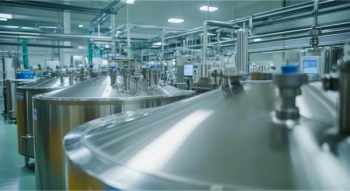
Best of the Week: Remembering Alan George Marshall, 2025 Charles Mann Award Winner
Top articles published this week include a tribute to Alan G. Marshall, an interview series that highlights how inductively coupled plasma–optical emission spectroscopy (ICP-OES) can help analyze metal content in pet food, and an announcement from Rigaku about their latest handheld Raman instruments.
This week, Spectroscopy published articles highlighting recent studies in several application areas in analytical spectroscopy, including food analysis, mass spectrometry, and counterfeit drug screening. Key techniques highlighted in these articles include inductively coupled plasma–optical emission spectroscopy (ICP-OES), Raman spectroscopy, and surface-enhanced resonance Raman spectroscopy (SERRS). Happy reading!
Alan G. Marshall (1944–2025) was the co-inventor of FT-ICR mass spectrometry and helped revolutionize ultrahigh-resolution analysis of complex mixtures. Over the course of his five-decade career, he published 650+ papers, mentored 150+ scientists, and influenced fields from astrobiology to petroleomics (1). Celebrated for his scientific brilliance and mentorship, his legacy continues to shape modern mass spectrometry. This tribute to Marshall highlights his contributions to the spectroscopy community.
In a recent interview, Lucy Semerjian of the University of Sharjah discussed her study on metal concentrations in 52 wet and dry cat food samples sold in Sharjah, United Arab Emirates. With rising pet ownership in the region and limited local data, the study aimed to assess compliance with U.S. and European safety standards. While 70% of samples met regulatory limits, 30% exceeded safe levels of metals like aluminum, copper, and zinc, which pose health risks with prolonged exposure (2). Dry foods generally contained higher metal concentrations because of processing and ingredients (2). Semerjian recommends food rotation, label scrutiny, and diverse protein sources to reduce cumulative metal exposure in pets.
In Part 2 of our interview with Lucy Semerjian, who is a Chair and Associate Professor at the University of Sharjah, she discusses her study analyzing metal content in pet food using ICP-OES. The method enabled accurate detection of multiple metals in both wet and dry pet foods, with strict quality controls ensuring reliable results (3). Semerjian highlighted that current U.S. and European regulations fall short in addressing chronic low-dose metal exposure in pets and recommends updated, long-term safety limits (3). She urges in the interview that manufacturers to adopt stricter ingredient sourcing and testing protocols, while advising veterinarians and pet owners to consider dietary exposure in health monitoring and nutrition choices (3).
Rigaku Analytical Devices, which is a division of Rigaku Holdings Corporation, unveiled its fourth-generation handheld Raman analyzer, the Icon-X, at the HAZMAT Conference in Baltimore, Maryland. Designed for chemical threat detection in high-risk environments, the Icon-X is the first 1064 nm Raman analyzer with standoff chemical analysis, enabling safer identification of hazardous materials like explosives and chemical agents (4). According to the company, it features faster processing, ergonomic design, a high-resolution camera, GPS tagging, and a broad onboard chemical library (4). This launch reflects a growing trend toward field-deployable spectroscopy tools, meeting the evolving needs of first responders, military, and border security personnel worldwide.
In this final interview installment with Marc Porter, who is Distinguished Professor at the University of Utah and the 2025 Charles Mann Award recipient, highlights the role of handheld Raman and SERRS-based technologies in decentralized healthcare. These tools enable rapid, on-site diagnostics, including counterfeit drug detection and TB screening, especially in low-resource regions (5). Porter emphasized the adaptability of SERRS immunoassays for multiplex disease detection and the critical need for rapid diagnostic responses to emerging threats like “Disease X” (5). He also points to advances in nanotechnology, artificial intelligence (AI), and material science as key drivers in shaping the future of affordable, accurate point-of-care diagnostics worldwide (5).
References
- Workman, Jr., J. A Life Measured in Peaks: Honoring Alan George Marshall (1944–2025). Spectroscopy. Available at:
https://www.spectroscopyonline.com/view/a-life-measured-in-peaks-honoring-alan-george-marshall-1944-2025- (accessed 2025-06-19). - Wetzel, W. Pet Food in the United Arab Emirates: An Interview with Lucy Semerjian. Spectroscopy. Available at:
https://www.spectroscopyonline.com/view/pet-food-in-the-united-arab-emirates-an-interview-with-lucy-semerjian (accessed 2025-06-19). - Wetzel, W. The Role of ICP-OES in Analyzing the Metal Content in Pet Food. Spectroscopy. Available at:
https://www.spectroscopyonline.com/view/the-role-of-icp-oes-in-analyzing-the-metal-content-in-pet-food (accessed 2025-06-19). - Wetzel, W. Rigaku Releases Updated Handheld Raman Analyzer for Chemical Threat Detection. Spectroscopy. Available at:
https://www.spectroscopyonline.com/view/rigaku-releases-updated-handheld-raman-analyzer-for-chemical-threat-detection (accessed 2025-06-19). - Chasse, J. Transforming Global Health with the Handheld Raman Revolution and SERRS: An Interview with 2025 Charles Mann Award Winner Marc Porter (Part 3). Spectroscopy. Available at:
https://www.spectroscopyonline.com/view/transforming-global-health-with-the-handheld-raman-revolution-and-serrs-an-interview-with-2025-charles-mann-award-winner-marc-porter-part-3- (accessed 2025-06-19).
Newsletter
Get essential updates on the latest spectroscopy technologies, regulatory standards, and best practices—subscribe today to Spectroscopy.





